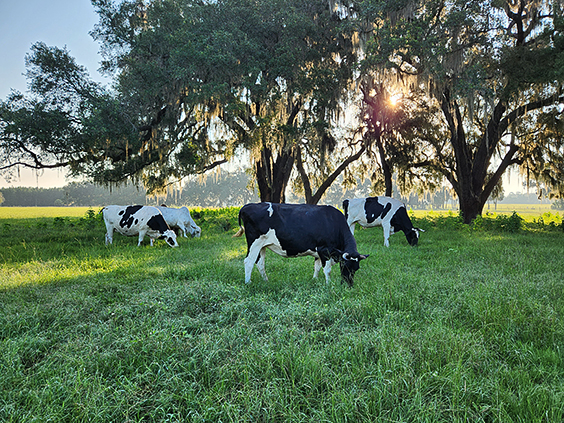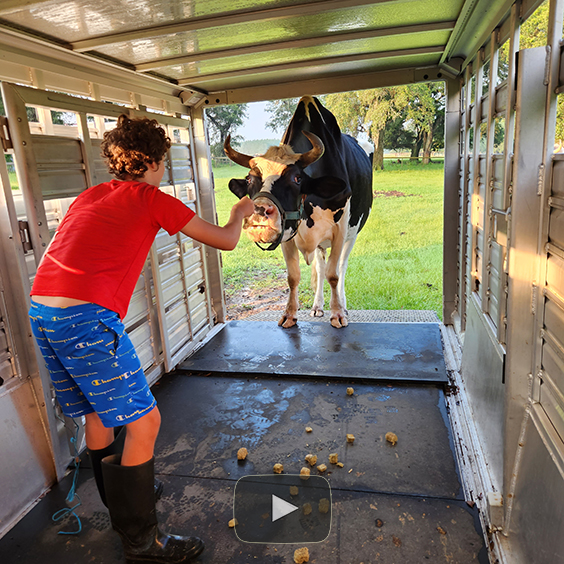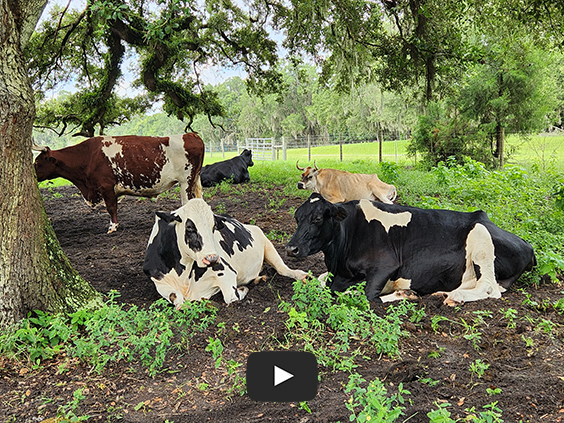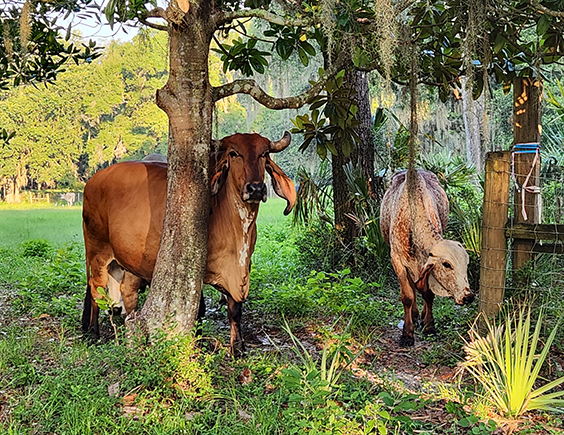- ISCOWP E-newsletters
In 2008, ISCOWP members rescued three cows: Priyavrata, Sri Uddharan Datta Thakur, and Amrita. Balabhadra, the president of ISCOWP...
The Matching Gift Challenge began on August 2. It is given by an anonymous ISCOWP member who will match every donor’s gift up to a total of $25,000. By August 6, ISCOWP members gave $5,892.50. Thank you, everyone! We will announce the challenge’s milestones on our Donate and Adopt A Cow web pages and in the ISCOWP monthly e-newsletters.

And in addition, it is Purushottama Maas, a month that appears only every 3 years. For those of Hindu belief, it is believed Purushottam month is the best month for all spiritual advancement because Sri Krishna has placed extra powers, mercy, and blessings in this month and because one gets more results from any devotional act such as giving in charity to the cows.
To take advantage of Matching Gift Challenge, donate here.
To take advantage of the Matching Gift Challenge, Adopt A Cow.
Devaki had lesions on his third eyelid. Since we were not fully equipped at ISCOWP to remove the lesions, we took Devakinandana to the Large Animal Hospital at the University of Florida. The vets removed the lesions on his left eye and froze some very small lesions on his right eye. Devaki amazed the vets and students with his size and gentleness.
Lesions on the third eyelid have a high propensity to be cancerous. Cancer can occur in cows that have areas of unpigmented skin, especially around the eye. Breeds such as Hereford, Poll Hereford, and white-faced Friesian are most susceptible, with Hereford crosses being less susceptible than purebreds. Cancer eye is rare in breeds with fully pigmented skin, such as Angus.

Eye cancer is usually found in older cows over age 7. Devaki is now 9 years old. Like any cancer, eye cancer can spread within the cow’s body. Since it is more surface-oriented, it is highly susceptible to treatment. Early treatment can stack the odds against cancer spreading.
A few hours later, after entering the hospital, Devakinandana returned home with a prescription for painkillers. Devaki was one of eight calves rescued in 2014. In the USA, it is a judgment call at the slaughterhouse whether to send the carcass of a cow with eye cancer onto the market. The key decision at a slaughterhouse is whether the cancer is confined to the eye globe, in which case the rest of the carcass is suitable for food, or whether the cancer may have spread through the animal’s lymph system, justifying disposal of the entire carcass. So it is a possibility that those who eat beef may be eating the flesh of a cancerous cow.
So far, Devaki is doing well. The tissue cut out was saved and tested to see if it was cancer. The results came back that it was cancer. But the good news is that the cutout tissue around the lesions was not cancerous. So they think they got all the cancer.
Vegan Indira and Kalindi Vijaya are close friends. They were rescued from the same dairy. However, they were rescued 2 years apart, and there are three years difference in their ages. So maybe they didn’t know each other in the dairy but communicated to each other their past histories. Kalindi produced 23, 096 pounds of milk, and Vegan produced 20,380 pounds of milk before their owner declared than ready for the slaughterhouse. Children were taken from both of them. So, they have much to share and thus can comfort each other.

Through the lives of our rescued cows and oxen, we show how cows have intelligence and empathy and deserve not to be eaten and manipulated for the profit of humans. We post reels of their lives on our social media channels daily. You can visit our Facebook, William Dove’s (Balabhadra) Facebook page, YouTube, Instagram, and TikTok pages.
A July 31 article in the AP News explained how animal heat stress can result in billions of dollars in lost revenue for farmers and ranchers in the meat and dairy industries. Dairy farmers lower barns’ temperatures with misters, air conditioning, and giant fans. These are expensive to install and create high energy bills. We have to remember that many dairies keep their cows inside the dairy barn all the time.
“We want to cool cows, but we also have to recognize that we want to also be environmentally sustainable,” Jackie Boerman, an associate professor in the department of animal sciences at Purdue University said. Those two ideas are, she said, “sometimes a little bit at odds with each other.”

More than a third of the heat-trapping gases cooking the planet come from growing and raising food. The U.S. is the world’s largest producer and consumer of beef by volume. People have been drinking less milk in the U.S. but eating more cheese, and government programs still support dairies across the country. About 20% of all global greenhouse gas emissions come from animal-based food products, said Atul Jain, a professor in the department of atmospheric sciences at The University of Illinois Urbana-Champaign who studies the interactions between climate and human activities like agriculture.

7016 SE 92 Terrace
Gainesville, FL 32641 USA
Phone: 352-792-6777
E-mail ISCOWP
Keep up with the latest news from ISCOWP. Sign up with your e-mail address to receive updates.
"*" indicates required fields
© 2023 This is the only official site of The International Society for Cow Protection, Inc. (ISCOWP) incorporated in 1990, located only in Gainesville, FL, USA. ISCOWP and The Lotus/Cow symbol are registered service marks of The International Society for Cow Protection, Inc. Website content can not be reproduced without permission.